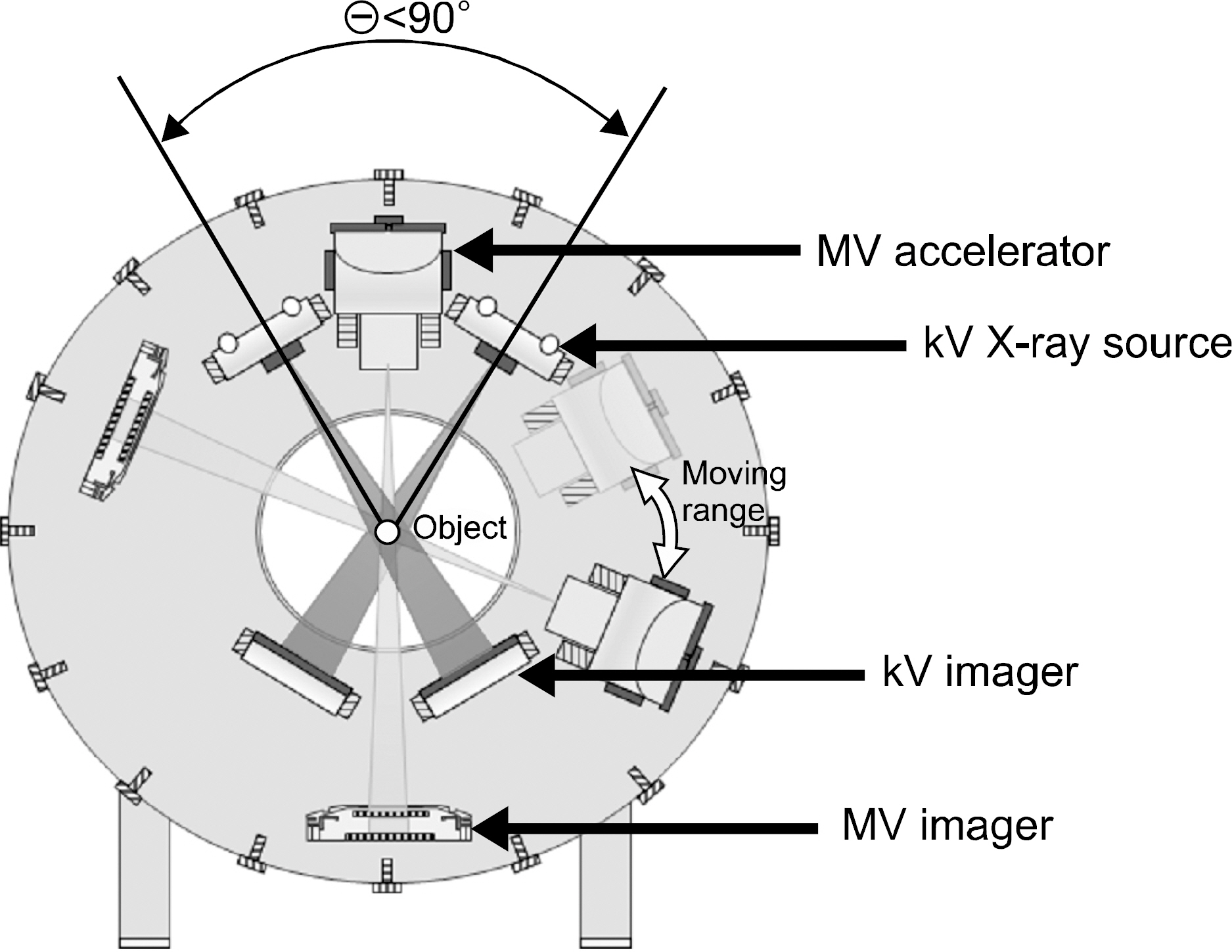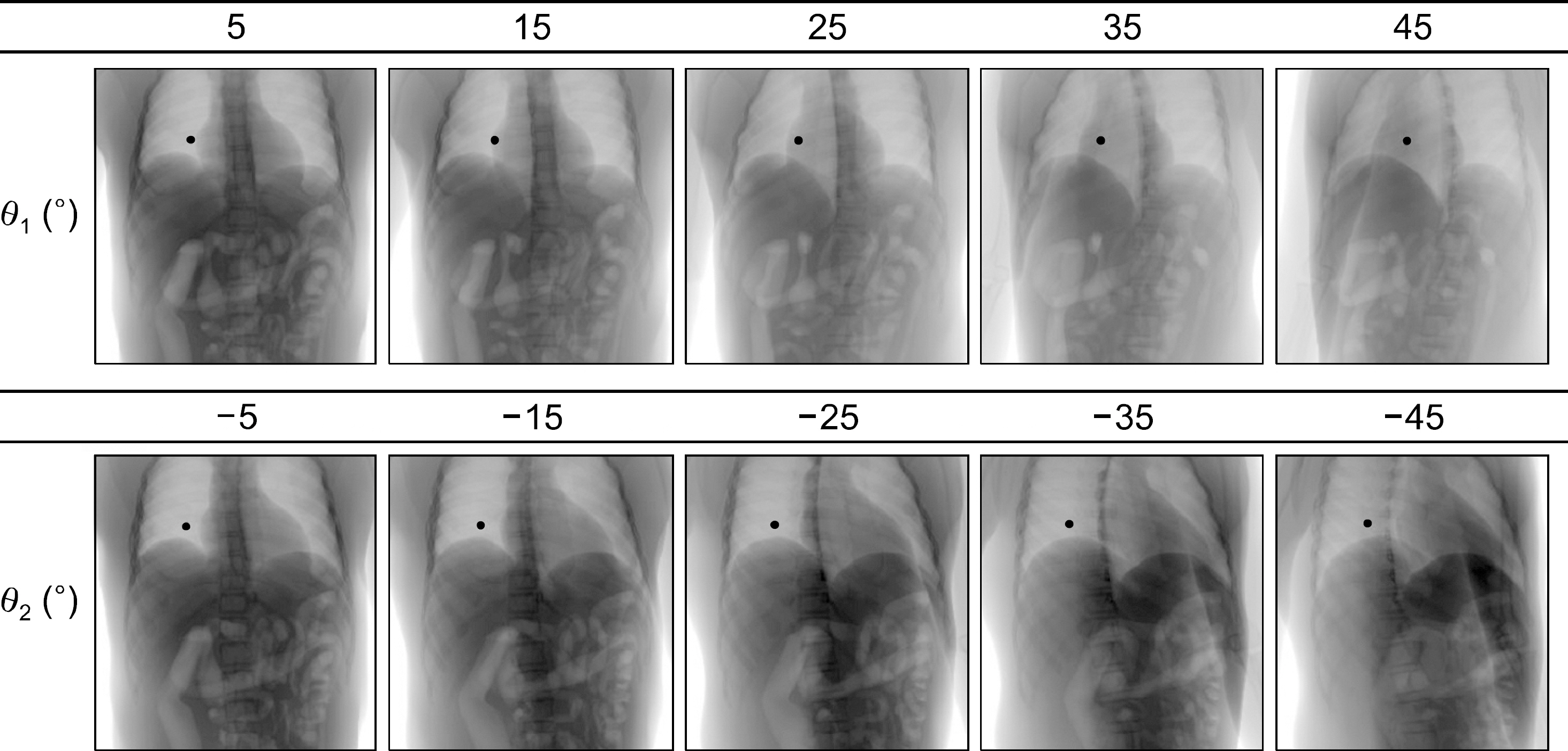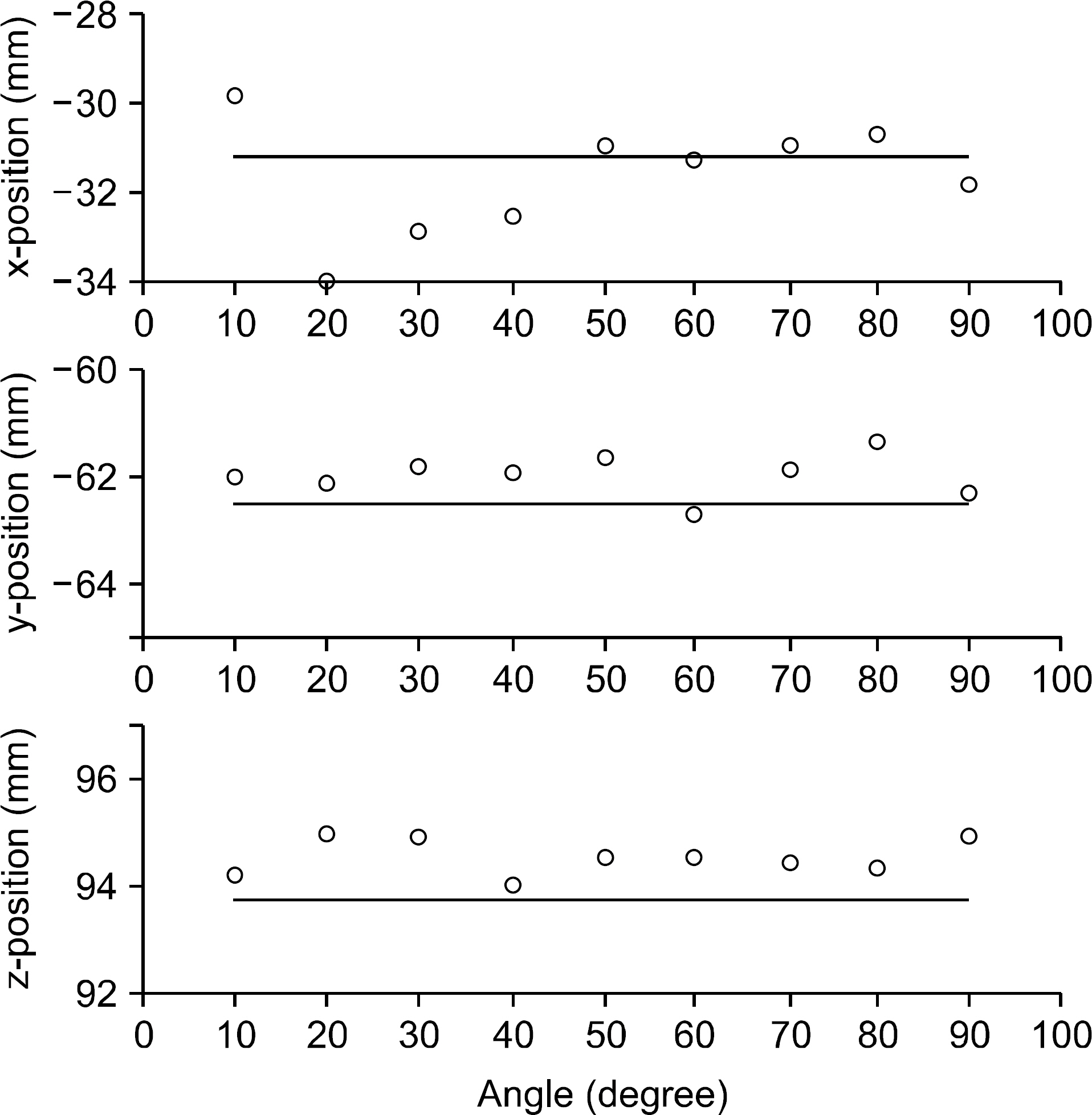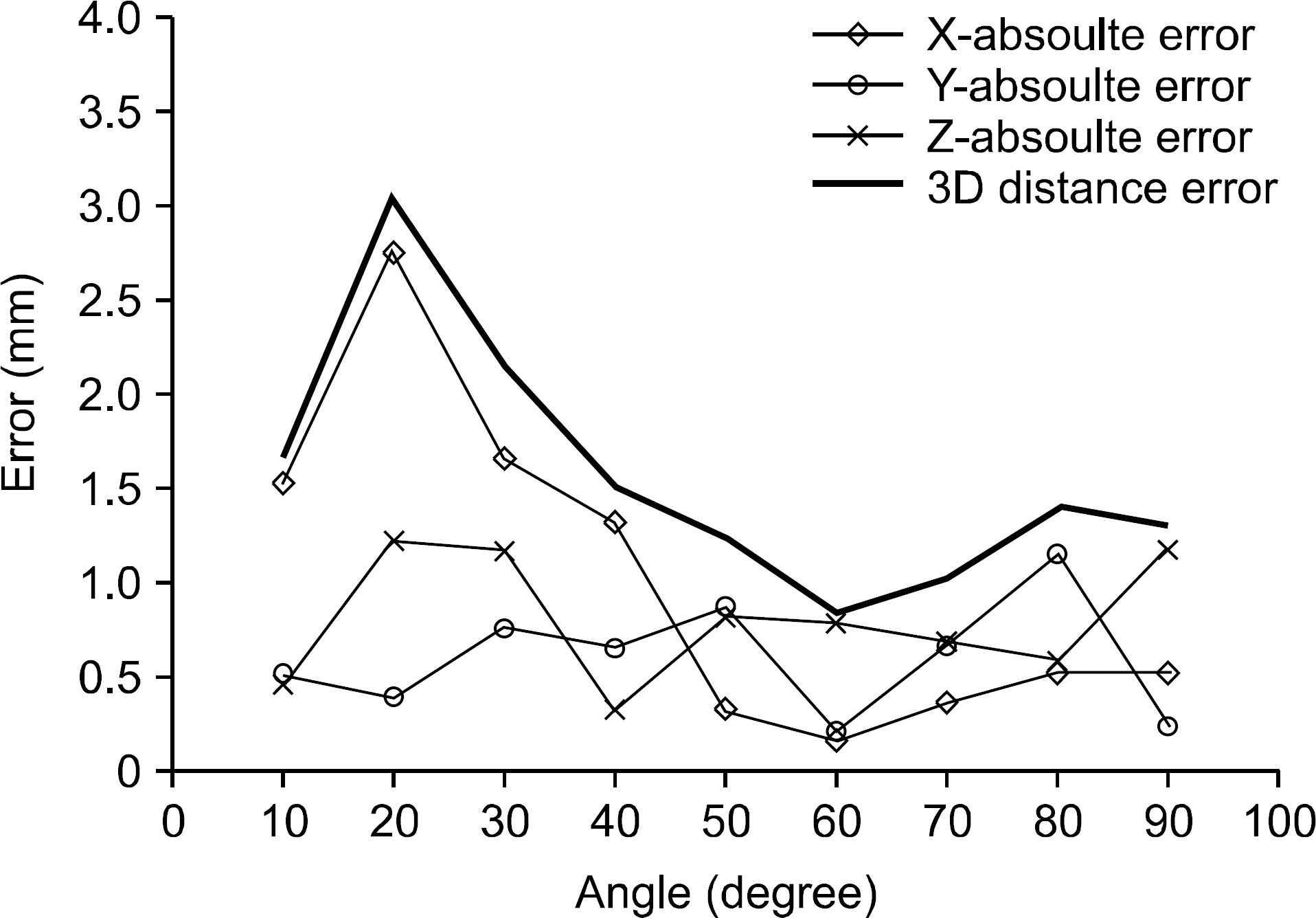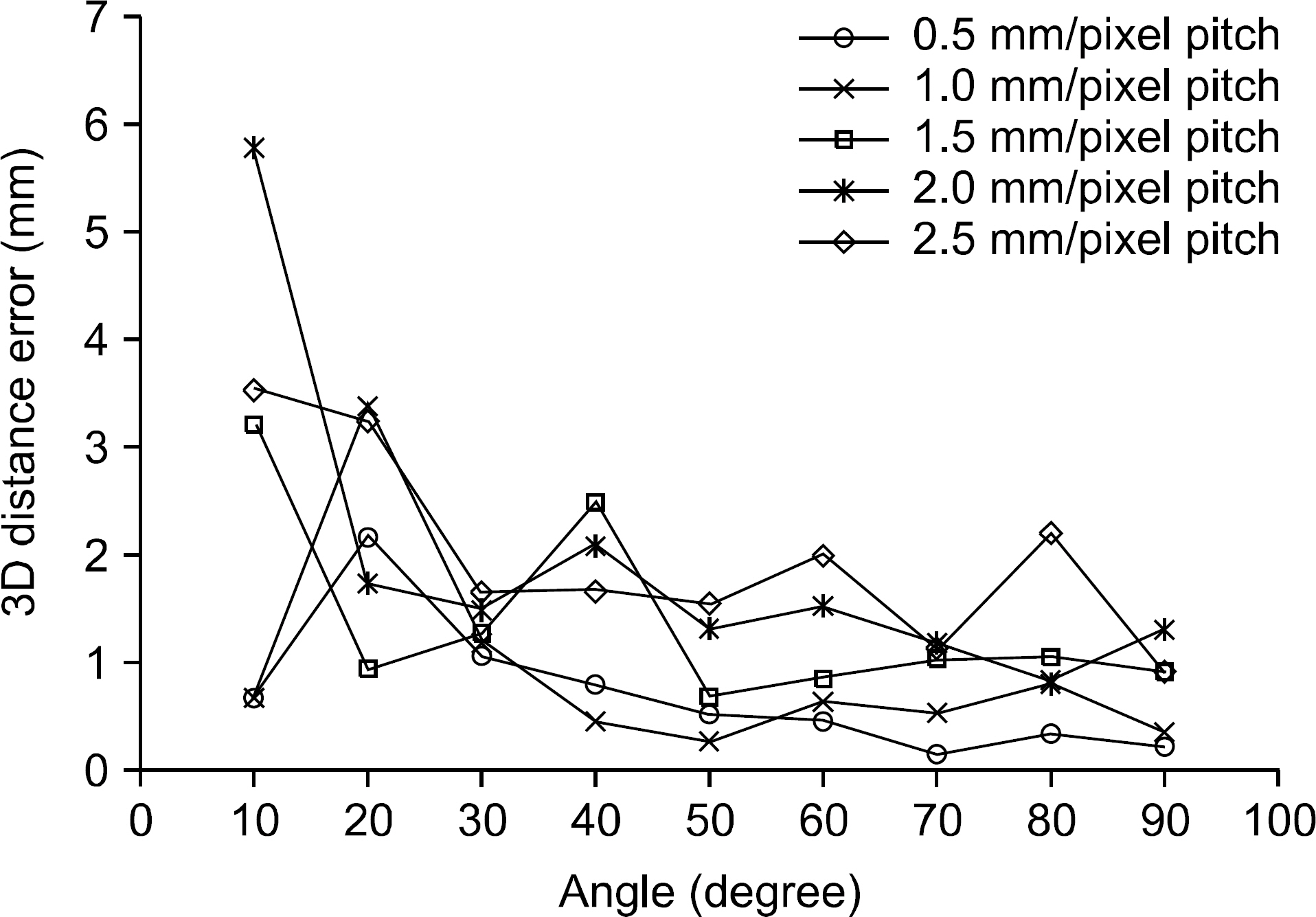Prog Med Phys.
2015 Sep;26(3):143-152. 10.14316/pmp.2015.26.3.143.
Analysis on the Positional Accuracy of the Non-orthogonal Two-pair kV Imaging Systems for Real-time Tumor Tracking Using XCAT
- Affiliations
-
- 1School of Mechanical Engineering, Pusan National University, Busan, Korea. seunglee@pusan.ac.kr
- 2Department of Radiation Oncology, Pusan National University Yangsan Hospital, Yangsan, Korea.
- KMID: 2069477
- DOI: http://doi.org/10.14316/pmp.2015.26.3.143
Abstract
- In this study, we aim to design the architecture of the kV imaging system for tumor tracking in the dual-head gantry system and analyze its accuracy by simulations. We established mathematical formulas and algorithms to track the tumor position with the two-pair kV imaging systems when they are in the non-orthogonal positions. The algorithms have been designed in the homogeneous coordinate framework and the position of the source and the detector coordinates are used to estimate the tumor position. 4D XCAT (4D extended cardiac-torso) software was used in the simulation to identify the influence of the angle between the two-pair kV imaging systems and the resolution of the detectors to the accuracy in the position estimation. A metal marker fiducial has been inserted in a numerical human phantom of XCAT and the kV projections were acquired at various angles and resolutions using CT projection software of the XCAT. As a result, a positional accuracy of less than about 1mm was achieved when the resolution of the detector is higher than 1.5 mm/pixel and the angle between the kV imaging systems is approximately between 90degrees and 50degrees. When the resolution is lower than 1.5 mm/pixel, the positional errors were higher than 1mm and the error fluctuation by the angles was greater. The resolution of the detector was critical in the positional accuracy for the tumor tracking and determines the range for the acceptable angle range between the kV imaging systems. Also, we found that the positional accuracy analysis method using XCAT developed in this study is highly useful and will be a invaluable tool for further refined design of the kV imaging systems for tumor tracking systems.
Keyword
MeSH Terms
Figure
Reference
-
References
1. Lin T, Cervino LI, Tang X, Vasconcelos N, Jiang SB. Fluoroscopic tumor tracking for imageguided lung cancer radiotherapy. Physics in Medicine and Biology. 54(4):981–992. 2009.
Article2. Shirato H, Shimizu S, Kitamura K, et al. Four-dimensional treatment planning and fluoroscopic real-time tumor tracking radiotherapy for moving tumor. International Journal of Radiation Oncology Biology Physics. 48(2):435–442. 2000.
Article3. Berbeco RI, Jiang SB, Sharp GC, et al. Integrated radiotherapy imaging system (IRIS): design considerations of tumour tracking with linac gantry-mounted diagnostic x-ray systems with flat-panel detectors. Physics in Medicine and Biology. 49(2):243–255. 2004.
Article4. Kamino Y, Takayama K, Kokubo M, et al. Development of a four-dimensional imageguided radiotherapy system with a gimbaled X-ray head. International Journal of Radiation Oncology Biology Physics. 66(1):271–278. 2006.
Article5. Wiersma RD, Mao WH, Xing L. Combined kV and MV imaging for real-time tracking of implanted fiducial markers. Medical Physics. 35(4):1191–1198. 2008.6. Poels K, Depuydt T, Verellen D, et al. A complementary dual-modality verification for tumor tracking on a gimbaled linac system. Radiotherapy and Oncology. 109(3):469–474. 2013.
Article7. Jong Seo Chai: Radiation therapy device of dual head type. No. 10–1465650 (. 2013.8. Segars WP, Mahesh M, Beck TJ, Frey EC, Tsui BM.: Realistic CT simulation using the 4D XCAT phantom. Medical Physics. 35(8):3800–8. 2008.9. Segars WP, Jason B, Jack F, Sylvia H, et al. Population of anatomically variable 4D XCAT adult phantoms for imaging research and optimization. Medical Physics. 40(4):043701. 2013.
Article10. Jules B, Jon R. Homogeneous Coordinates. The Visual Computer: International Journal of Computer Graphics. 11(1):15–26. 1994.11. Shirato H, Harada T, Harabayashi T, et al. Feasibility of insertion/implantation of 2.0-mm-diameter gold internal fiducial markers for precise setup and real-time tumor tracking in radiotherapy. International Journal of Radiation Oncology Biology Physics. 56(1):240–247. 2003.
Article12. Shimizu S, Shirato H, Kitamura K, et al. Use of an implanted marker and real-time tracking of the marker for the positioning of prostate and bladder cancers. International Journal of Radiation Oncology Biology Physics. 48(5):1591–1597. 2000.
Article
- Full Text Links
- Actions
-
Cited
- CITED
-
- Close
- Share
- Similar articles
-
- Evaluation of Real-time Measurement Liver Tumor's Movement and Synchrony(TM) System's Accuracy of Radiosurgery using a Robot CyberKnife
- Mixed-reality simulation for orthognathic surgery
- Evaluation of the Positional Uncertainty of a Liver Tumor using 4-Dimensional Computed Tomography and Gated Orthogonal Kilovolt Setup Images
- Intraoperative navigation in craniofacial surgery
- Development of a Real-Time Internal and External Marker Based Gating System for Proton Therapy

